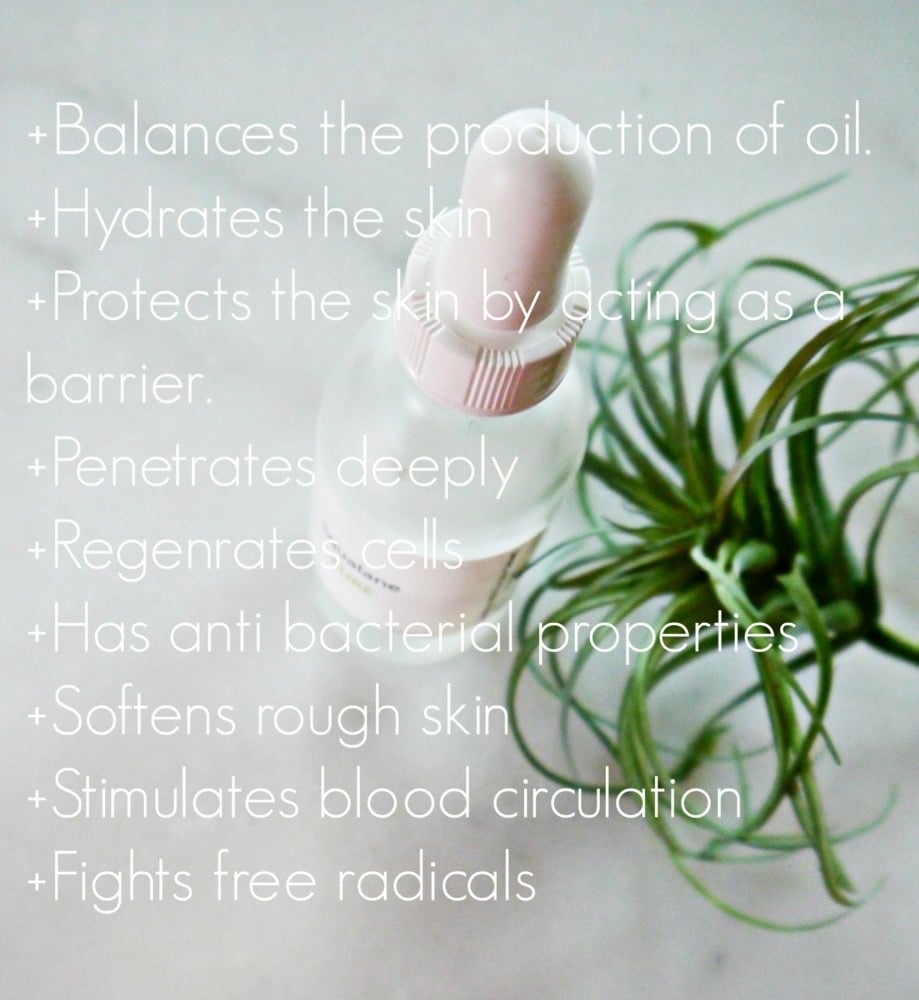
Squalane is an up and coming beauty product that has numerous benefits and when sourced properly, is organic, vegan and great for all skin types!
Squalane belongs to the oil family. It is found naturally in our skin and helps with cell function, elasticity and hydration. By around the age of 25, the amount of squalane in our skin begins to rapidly decline. By age 50, we have only 5% left. Just like it’s cousins, collagen, coQ10 and hyaluronic acid-they don’t stick around indefinitely and replenishing it is our only option.
Non human squalene is typically found in the livers of deep sea sharks. However, because we believe in the humane treatment of animals, I prefer to get squalane from olives. If you noticed, the spelling for squalene that comes from sharks is with an E. This form of squalene has an iffy shelf life and has been known to clog pores. The olive squalAne has the same benefits, is non-comedogenic and is much more stable. If you’d like to support the movement against shark squalene go HERE.
Squalane is very similar to the oil in the skin. It penetrates thoroughly and quickly and leaves no greasy residue behind. It also has no odor or color and feels like a mix between glycerin and oil.
Skin Benefits of Squalane:
- Balances the production of oil
- Hydrates the skin
- Protects the skin by acting as a barrier.
- Penetrates deeply
- Regenrates cells
- Has anti bacterial properties
- Softens rough skin
- Stimulates blood circulation
- Fights free radicals
How to Use:
- You can use squalane as a moisturizer by itself. There is no need to dilute it. You can apply it just as you would a facial oil. Use 4-8 drops and press into your skin. You can also add it into facial oils for a hybrid moisturizer!
- You can use squalane as a serum the apply a facial oil or cream on top of it or you can simply use it alone as your only moisturizer.
- Because squalane isn’t an oil but belongs to the oil family, it will not mix with any water based ingredients unless you are making your own lotion with an emulsifier.

One really nice attribute of squalane is that it is very gentle and can be used by the most sensitive skin types. Squalane has been know to reduce psoriasis, eczema and even scarring.
I’m very hopeful that squalane will be an amazing tool for oily skin types. Since it does not clog pores, is antibacterial, balances oil production and is light, it very likely could be the perfect moisturizer for oily skin. I am not oily. In fact, I am a dry mess thanks to the winter and a killer cold so I can’t say personally if it will help with acne or oily skin. Please do comment if you have insight on this!
I’m excited to start experimenting with this super cool ingredient! In fact, I have already made and been using a Squalane Skin Hydrating Serum that I will share with you once I have used it longer!
Find squalane HERE.
xx, Jenni
Jenni, thanks for breaking this down so simply! I’m going to give squalane a try and order through your link. Can’t believe how reasonable it is! Question…if I were to apply hyalauronic acid, would I apply the squalane on top of that? I know to always apply the water soluble stuff first. Let me know your thoughts!
Hi Elizabeth! I have been applying my squalane serum first, letting it soak in then putting a layer of hyaluronic acid on top. I don’t know why I do that order so you might just experiment. I’m loving this ingredient though. It soaks in so nicely and leaves my skin baby soft! For sure try it asap!
Squalane vs Squalene. Nothing to do with sharks being a source. Slightly different compound – the squalene (from olives more commonly now ) has been hydrogenated (still from olives) which produces squalane. A more stable substance.